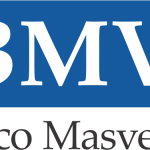Anúncios
A slow income month can put pressure on your finances, making it difficult to cover essential expenses like rent, utilities, groceries, and transportation.
Whether you’re a freelancer, small business owner, or a salaried worker facing unexpected financial gaps, a well-planned loan can help you stay on track without accumulating long-term debt.
However, using a loan wisely during a slow month requires careful planning, strategic allocation of funds, and a clear repayment strategy.

9 Ways to Use a Loan to Bridge the Gap During a Slow Income Month
Without proper management, a temporary fix can turn into an expensive financial burden. Here are nine effective ways to use a loan to bridge the gap during a slow income month while keeping your finances stable.
1. Cover Essential Living Expenses First
When income is lower than usual, the first priority should be essential living costs. Rent, mortgage payments, utility bills, and groceries must be covered before considering any non-essential spending.
Using a loan to ensure that you don’t fall behind on critical expenses can prevent late fees, service disconnections, or housing instability. Prioritizing these costs will keep your household running smoothly until your income stabilizes.
If possible, look for a low-interest loan or a credit union personal loan specifically designed for short-term financial support.
2. Avoid High-Interest Debt by Refinancing Existing Obligations
If you’re struggling with high-interest credit card payments or other short-term debts, using a loan to refinance and consolidate payments can be a smart move. A personal loan with a lower interest rate allows you to replace multiple high-interest debts with a single, more manageable payment.
This strategy can reduce overall interest costs, extend repayment terms, and ease financial pressure during a slow income month. However, before refinancing, check for prepayment penalties or additional fees to ensure you’re truly saving money.
3. Pay Off Bills on Time to Avoid Late Fees and Penalties
A slow income month often means difficult financial choices, but missing bill payments can make things worse. Late fees, penalties, and potential damage to your credit score can have long-term consequences.
Using a loan to stay current on bills ensures you avoid unnecessary fees and protect your credit standing. Once your income returns to normal, you can repay the loan without the added stress of accumulated penalties.
4. Supplement Cash Flow for Necessary Business Expenses
If you run a small business or work as a freelancer, an income dip can disrupt your ability to operate. Using a loan strategically to cover essential business expenses—such as inventory, software, or advertising—can keep your business running until revenue picks up.
Short-term business loans or lines of credit can provide temporary cash flow relief without resorting to high-interest personal loans. However, borrowing should be done cautiously to ensure that the investment leads to future income growth.
5. Cover Medical or Emergency Costs Without Accumulating High-Interest Debt
Medical bills and unexpected emergencies can arise at any time, and when income is low, they become even more challenging to manage. Instead of relying on high-interest credit cards, a personal loan can provide affordable financing for urgent expenses.
Many healthcare providers offer payment plans or low-interest medical loans, which can be a better option than standard personal loans. Exploring all financing options before borrowing ensures you minimize long-term costs while covering necessary expenses.
6. Manage Transportation Costs Without Disrupting Your Routine
For many people, reliable transportation is essential for maintaining employment and daily responsibilities. If a slow income month coincides with necessary car repairs, a loan can help cover maintenance costs, fuel, or insurance payments, ensuring that you remain mobile and able to continue earning.
Some lenders offer auto repair loans with flexible repayment options, making them a reasonable alternative to credit cards or payday loans. Keeping your vehicle in working condition prevents further disruptions to your income.
7. Prevent Debt Cycles by Sticking to a Repayment Plan
A loan should be a temporary financial tool, not a long-term dependency. Before taking out a loan, create a realistic repayment plan based on your expected income recovery.
Borrow only what you need and ensure that your loan payments fit within your upcoming income streams. Avoid rolling over loans or extending repayment terms unnecessarily, as this can lead to long-term financial strain.
If you anticipate further financial challenges, consider negotiating lower payments with creditors or exploring alternative income sources instead of relying solely on loans.
8. Use Loan Funds to Make Strategic Investments in Your Financial Stability
Not all borrowing is about covering expenses—sometimes, a small loan can be an investment in long-term financial stability. If your income is unpredictable, using a loan to enroll in skills training, purchase work equipment, or invest in certifications can lead to higher earnings in the future.
Loans should be used with a forward-thinking mindset, ensuring that today’s borrowing results in future financial improvements. Investing in personal and professional growth reduces the likelihood of future income fluctuations.
9. Build a Safety Net to Reduce Future Financial Stress
A slow income month is often a sign that an emergency fund is needed for the future. If you must take out a loan, consider using it not just for immediate expenses but also for laying the groundwork for better financial security.
Once your income stabilizes, prioritize setting aside small amounts each month into a savings account. Even a modest emergency fund can reduce dependence on loans during future financial slowdowns.
Final Thoughts
Using a loan to bridge the gap during a slow income month requires careful planning and disciplined borrowing. The goal is to cover essential expenses, avoid high-interest debt, and ensure that borrowing remains a short-term solution rather than an ongoing financial crutch.
By focusing on necessary expenses, exploring refinancing options, avoiding late fees, and making strategic financial decisions, you can use loans effectively without compromising long-term stability.
Careful management of borrowed funds ensures that you stay afloat during difficult months while preparing for more stable financial periods ahead.






